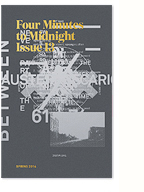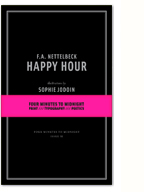Filed under: reading and writing
 Picture This! Posters of social movements in Québec
Picture This! Posters of social movements in Québec
I was honoured to be asked by Dave Widgington of Cumulus Press to write a chapter introduction for his recently released collection of political posters. Dave and I have collaborated many times in the past, and in fact, the first time we met, during the Declarations design conference, the seeds for this book were sown when he met the guys at CRIP. Dave asked me for a personal, non-didactic, text that would communicate the “why” of independent poster making.
ARTISTS’ POSTERS: WE ARE EVERYWHERE
The Ads, They Are-a-Everywhere
Ten years ago, as a design student at Concordia University, my political and visual consciousness was burgeoning simultaneously in a politically heated educational environment. In class, I learned how to craft messages and images while studying their powerful impact within contemporary society. In the cafés and in the streets, I began to implicate myself into the world around me, learning about the countless issues that seemed to cause such pangs in my heart. I would walk by hoardings covered with posters calling for social change, and I would take down the dates and addresses to attend meetings and lectures where human rights violations, genocidal government policies, or the erasure of our public sphere were being discussed.
During a particularly memorable class on visual culture, my professor made us sit through a series of television spots for a large banking institution. The campaign was advertising the ‘revolutionary’ idea of internet banking. For an entire four-hour class, he made us watch these spots one after the other, over and over again. It felt surreal when nearly halfway through the class, he finally introduced a few pointed questions: “What’s interesting about these ads? What is being said? What are you seeing?” Slowly, between the screenings, he teased the answers out of us: the handwritten sandwich boards and dramatic black and white photography, the composition of a shot of children walking up a hill that perfectly mirrored Matt Herron’s famous photograph of the Selma, Alabama civil rights march. And of course, the use of Bob Dylan’s The Times, They Are A-Changing, voiced by a chorus of happy children of the new revolution.
Many of my fellow students walked out of the class bleary-eyed and bored but I felt like I had had an epiphany. I was furious over the symbolic cooption of the campaign, fascinated by how much was encoded in what I thought at fist to be a simple television commercial, and empowered by my newfound knowledge. I also began to understand how the totality of commercial images affect us as individuals and as a society, how our emotions and desires are so blatantly manipulated, and how much I personally needed to work against this insidious propaganda.
Merci, je t’aime…
Shortly after that class, we were assigned a street intervention project. We were asked to convey a personal, political or social message within an urban context. My target was set from the start. I made a series of large format black and white posters consisting of four violently drawn figures in various states of anguish. Each one was accompanied by a related slogan: “buy life”, “buy pain”, “buy memory”, “buy death”. Under the cover of night, I wheat-pasted these posters over the glowing advertising columns that emerge out of the Plateau sidewalks. Each was targeted towards a specific type of ad. “Memory” was pasted over rejuvenating skin cream, “Death” over Absolut vodka. The light and colour of the original ads shone through my posters, but their commercial messages were now filtered through mine. I was thrilled by the performance of this dramatic act of vandalism, avoiding the roaming cops and savouring a cup of coffee after the deed was done.
Documenting the posters several days later, I found them in varied states of distress, torn and tattered, but generally holding up. As I came up to a “buy memory” poster on Duluth Avenue, I noticed a ball-point scrawl on its bottom right-hand corner. It read “Merci, je t’aime…” In the ten years since that moment, I would be hard pressed to recall ever feeling more rewarded by my work.
We Are Everywhere
It is often said that an artist’s role is to reflect society, to hold up a mirror that allows us to see things from a different perspective. Posters, as vernacular art, provide the most accessible means to doing so. Liberated from the elitist language of ‘fine’ art, inexpensive to produce and distribute, and available to anyone who happens to be passing by, (political) posters act as an ephemeral reflection of the myriad of issues that anger, excite and inspire us as individuals.
César Rojas’ Cultural Resistance poster series honours indigenous heroes, acting as a public history lesson while celebrating over 500 years of resistance to genocide. And if we understand genocide as the cultural and physical annihilation of a people, not only do these posters celebrate this resistance, but they clearly take part in it by helping to give a people back its history.
Meanwhile, the NON! poster, with its childlike illustration, forcefully conveys its anti-war message by presenting us with the irreconcilable notions of children and war. The artist’s simple use of lines and colours becomes an emotional sledgehammer imprinted upon our conscience.
It’s particularly exciting for me to see the multi-talented Frederic Back’s work included in this collection. The surreal and violent landscape depicted in his complex poster Parable of the Blind delivers a stinging critique by removing the veneer of civility from our society’s march for progress. Simultaneously it captures what I consider to be at the heart of activist work: a visceral co-mingling of anger and love, beauty and fear, humour and despair, alongside a fundamental inability to accept things the way they are.
The wide variety of posters displayed here, from the crudely hand-lettered to the intricately illustrated, visually stand together, speaking back to the thousands of commercial messages we are bombarded with every day. Pasted on the hoardings and walls of our cities, emerging from the looming billboards that sell us burgers and fashionable underwear, they remind us that things do matter, that we do have a voice, that though we may be small, we are everywhere.
No Comments so far
Leave a comment
Leave a comment















